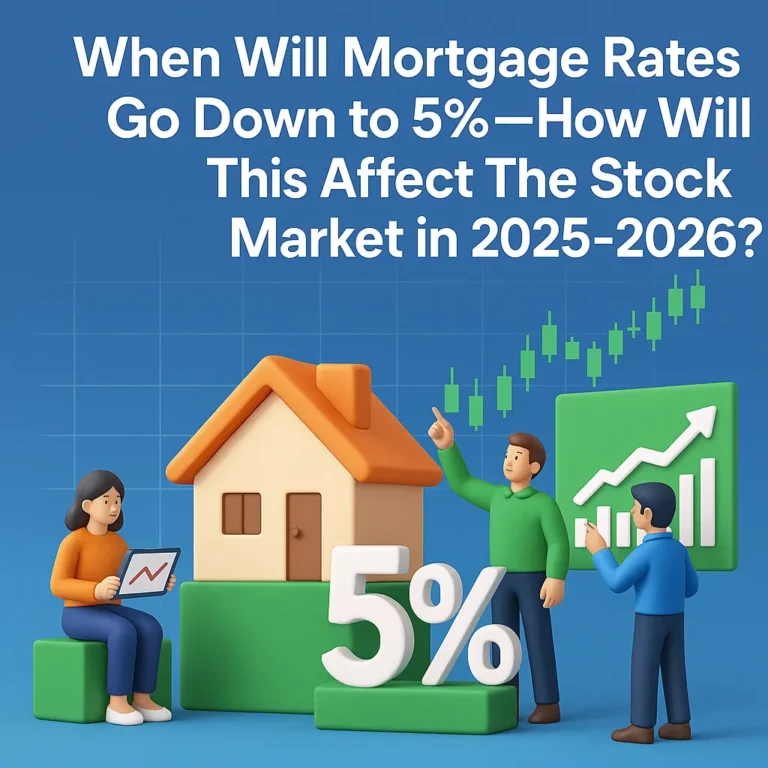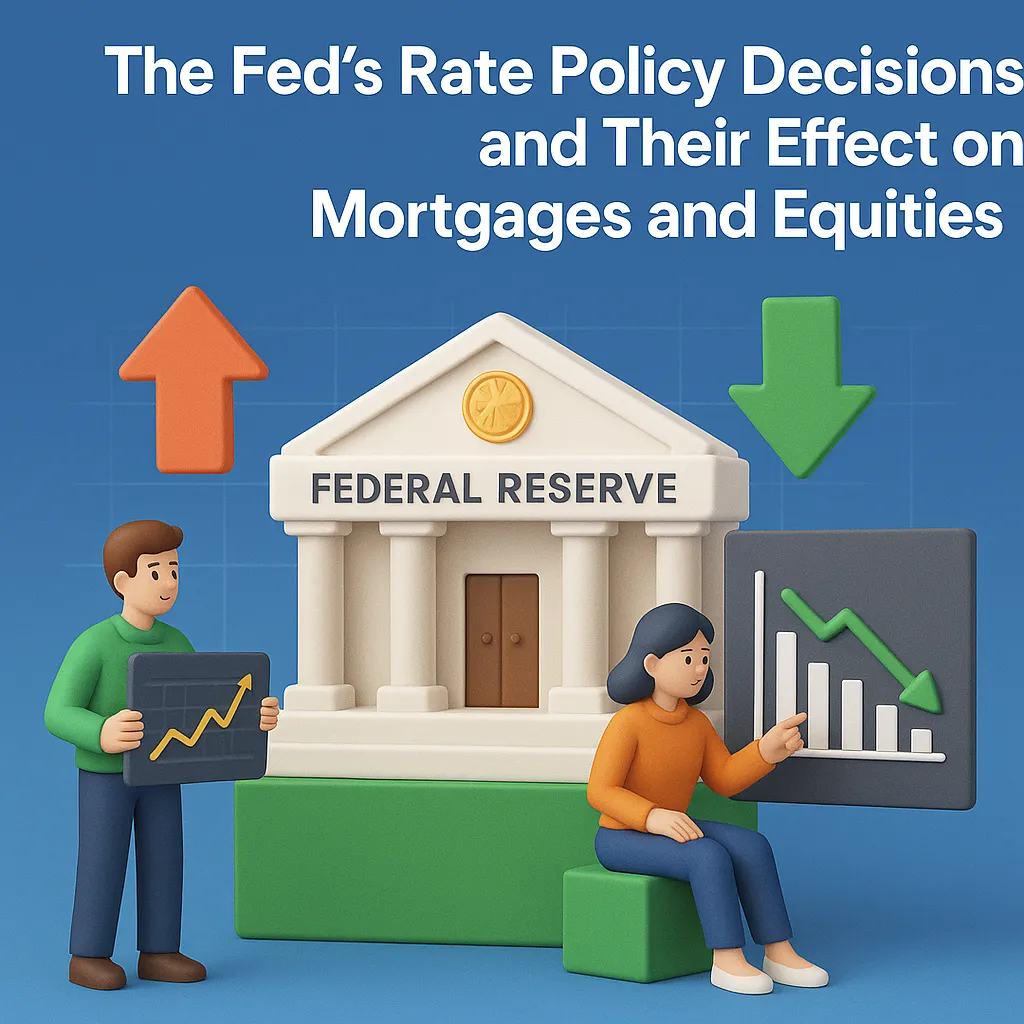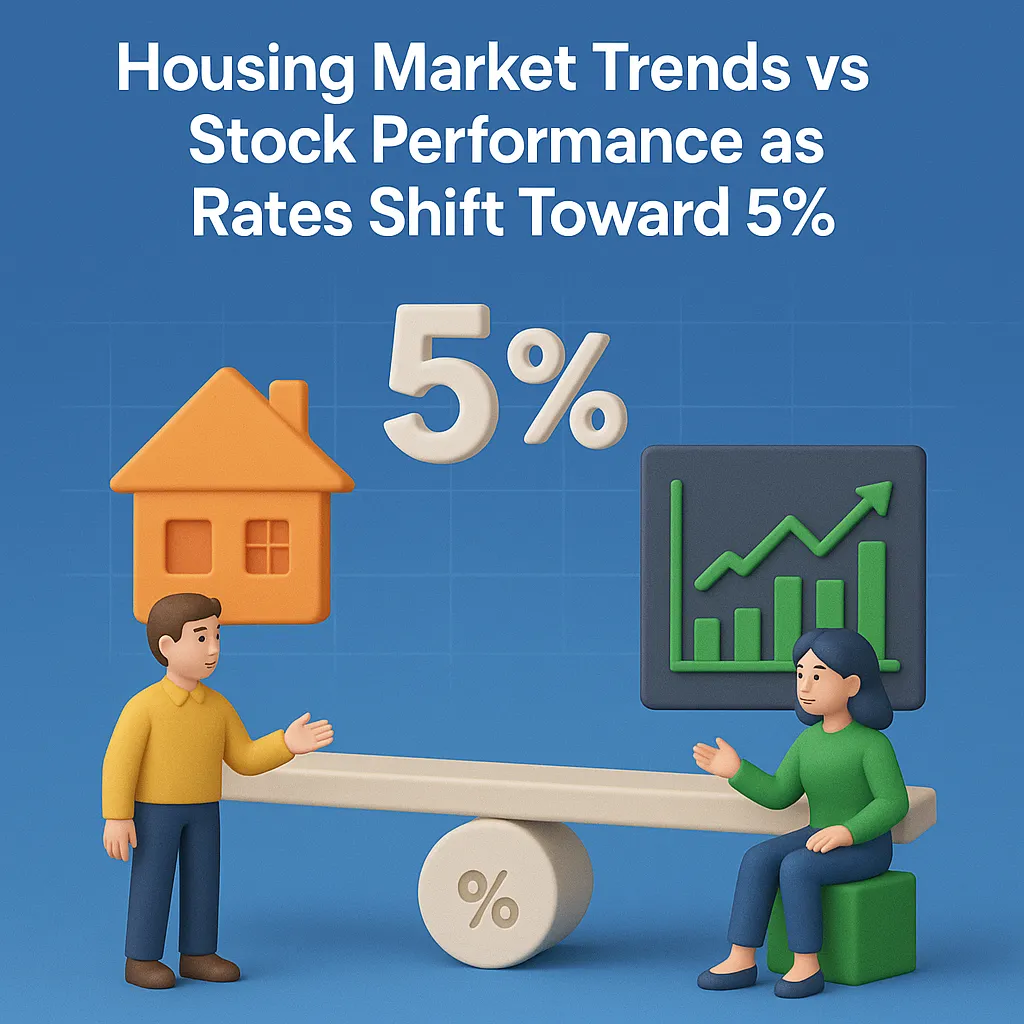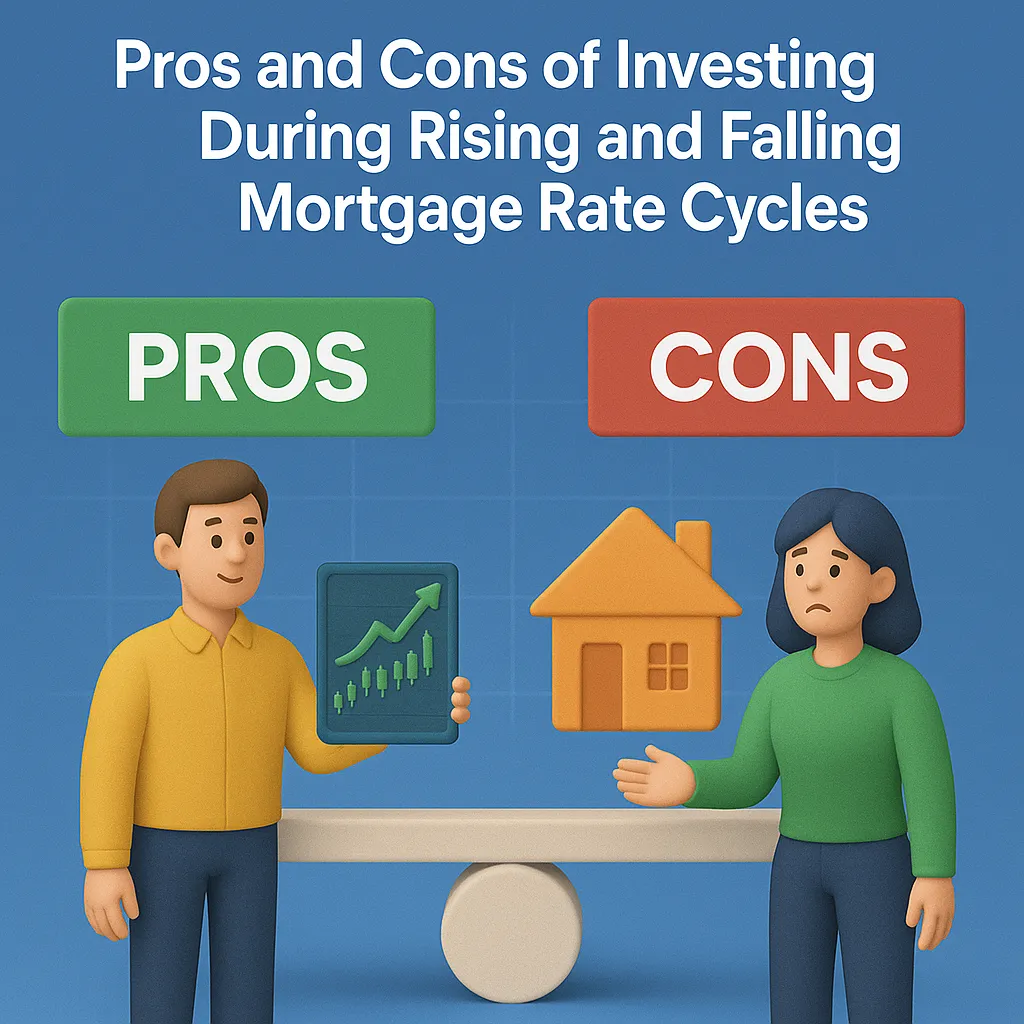What Wall Street Loves and Hates
Sentiment drivers to watch as yields move—helps frame sector tilts when mortgage rates drift toward 5%.

By TradeStockAlerts •
In this guide, we tackle the question most homeowners and investors are asking: when will mortgage rates go down to 5? We map the likely timeline into 2025–2026 and explain how shifts in policy rates can ripple through the housing market and into equities—from banks and homebuilders to rate-sensitive growth stocks.
You’ll find an easy roadmap of Fed drivers, scenario timelines, and the practical playbook for positioning portfolios when mortgage rates drift toward 5%. Use the table of contents to jump to any section.
The first step in answering when will mortgage rates go down to 5 is understanding the Federal Reserve’s role. Mortgage rates follow the 10-year Treasury yield more closely than the Fed funds rate, but central bank policy anchors expectations. When inflation cools and the Fed signals easing, yields typically decline, pulling mortgage rates with them.
According to the Federal Reserve’s monetary policy, the pace of rate cuts will depend on inflation data and labor market slack. Investors must weigh how quickly disinflation trends unfold versus the Fed’s caution against cutting too early. A slow path keeps mortgage rates elevated; a faster pivot could open the door to 5% by late 2025.

The relationship between the stock market and rates is crucial. Falling yields often boost equities, especially in growth-heavy sectors, but they can also signal slowing economic momentum. Understanding this balance helps investors position portfolios for the dual impact on the housing and equity markets.
For context, Investopedia’s mortgage rate guide outlines how lenders price loans based on risk, spreads, and yield curves. By monitoring Fed communications, CPI releases, and Treasury auctions, traders can anticipate moves before mortgage rates officially tick down.
To forecast when will mortgage rates go down to 5, we built three potential scenarios based on inflation, Fed actions, and bond market reactions. Each scenario shows how rates could behave through 2025 and into 2026, and how the mortgage rates and stock market relationship plays out.
Base Case: Inflation cools to ~2.5% by mid-2025, prompting gradual Fed cuts. Mortgage rates drift to 5.25–5.5% by late 2025, with equities stabilizing as yields ease.
Bull Case: Faster disinflation drives aggressive Fed easing. Mortgage rates touch 5% by mid-2025, sparking a housing rebound and cyclical stock leadership.
Bear Case: Inflation proves sticky. The Fed delays cuts until 2026, leaving mortgage rates above 6% for longer and weighing on rate-sensitive sectors.

A critical link is the housing market vs stock market cycle. As mortgages fall, demand for homes rises, which supports consumer spending and construction stocks. At the same time, lower yields reduce the discount rate on growth company earnings, often lifting tech valuations. However, if rates only fall because of recession fears, equities may remain volatile.
For real-time updates, resources like Bloomberg’s mortgage coverage and Yahoo Finance mortgage rate trackers help investors monitor shifts day by day. Pairing those insights with educational resources such as our Stock Market for Dummies PDF keeps traders positioned for opportunity.
Don’t wait until mortgage rates hit 5% to adjust your portfolio. Explore strategies now with our guides on understanding capital gains taxes and timing entries with Golden Timing: When Should You Buy Shares.
Knowing when will mortgage rates go down to 5 is only part of the puzzle. Investors also need a plan to manage portfolio adjustments during this transition. Historically, the link between mortgage rates and stock market performance is strongest when housing demand rebounds, fueling consumer confidence and boosting equities tied to construction, retail, and financial services.
The Fed interest rates effect also reaches beyond housing. Lower rates tend to lift growth stocks by improving discounted cash flow valuations, while pressuring banks’ net interest margins. That’s why diversification across sectors—and aligning with the Fed’s trajectory—becomes critical.
The housing market vs stock market correlation can offer early signals. Rising home sales often precede stronger equity performance in home improvement retailers, furniture, and discretionary spending. Investors who monitor housing permits and builder confidence surveys can get a head start on equity rotations.
Positioning for both rising mortgage rates investing and falling-rate opportunities means preparing scenario plans. While higher rates usually dampen credit-sensitive sectors, they can benefit defensive yield plays. Conversely, if mortgages ease toward 5%, growth and cyclical equities often outperform. This dual strategy hedges against uncertainty.
Finally, tie your moves to interest rates stock performance metrics. Tracking correlations between 10-year yields and equity indices helps investors spot inflection points. Use these signals to adjust entries, scale positions, and rebalance tax-efficiently—supported by guides like our capital gains taxes overview.
To gauge when will mortgage rates go down to 5 and what it means for portfolios, investors should map how lower yields cascade through sectors. The Fed interest rates effect typically supports duration-sensitive assets: homebuilders, REITs (selectively), and growth equities that benefit from a lower discount rate. Meanwhile, financials can face margin pressure if the curve flattens, though rising loan demand may offset some headwinds.
Historically, falling yields improve interest rates stock performance for software, semis, and discretionary names tied to big-ticket purchases (autos, appliances) as financing costs ease. But if yields fall on recession fears, cyclicals can still lag. This is why we pair sector tilts with risk controls and data triggers (inflation, payrolls, and PMIs) rather than a single, all-in bet.
| ✅ Tailwinds if Mortgage Rates Approach 5% | ❌ Risks to Monitor |
|---|---|
| Housing activity improves; potential pickup in new/home resale transactions. | Growth in housing may stall if lower rates coincide with weak labor trends. |
| Multiple expansion for quality growth as discount rates fall. | Bank NIM compression if curve flattens; credit tightening risks persist. |
| REITs with healthy balance sheets see cost-of-capital relief. | Sticky inflation delays the path to 5%, extending volatility. |
| Discretionary big-ticket demand recovers as financing costs ease. | Geopolitical or supply shocks keep long yields elevated. |

Implementation matters. For rising mortgage rates investing risk scenarios, consider staggered entries, stop-loss placement below recent support, and tax-aware rebalancing. When rate momentum turns decisively lower, scale into rate-sensitive exposures while keeping dry powder for pullbacks.
Sentiment drivers to watch as yields move—helps frame sector tilts when mortgage rates drift toward 5%.
Foundational guide for interpreting rate moves, earnings multiples, and market cycles.
Daily coverage of mortgage moves alongside macro and market reactions.
Current rate snapshots and lender comparisons to benchmark progress toward ~5%.
Community perspectives on refinancing timing, housing decisions, and budgeting as rates shift.
Analysts expect that if inflation continues cooling and the Fed eases policy by mid-2025, mortgage rates could approach 5% by late 2025 or early 2026. However, this depends heavily on inflation trends and bond market reactions.
Lower rates reduce borrowing costs and often lift housing, consumer discretionary, and growth stocks. But if rates fall because of recession fears, equities can remain volatile despite cheaper financing.
The Fed doesn’t set mortgage rates directly, but its policies anchor Treasury yields, which influence mortgages. See the Federal Reserve’s monetary policy page for updates.
Homebuilders, REITs, and quality growth companies often gain when financing costs ease. Banks may face pressure if lending margins shrink, but increased loan demand can offset this.
Use staged entries, watch catalysts like CPI and Fed minutes, and remain tax-aware. Our guides on capital gains taxes and when to buy shares can help shape strategy.
The question of when will mortgage rates go down to 5 is tied to Fed policy, inflation, and global bond market forces. Our base case sees late 2025 as the likeliest timeline, with impacts across housing demand, sector leadership, and equity valuations.
Don’t wait for headlines—prepare early. Review our resources like The Stock Market guide and What Wall Street Loves and Hates to position with clarity.
Get daily insights, data-driven alerts, and strategy updates only at TradeStockAlerts.com. Be ready when mortgage rates finally touch 5%.